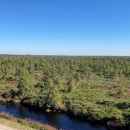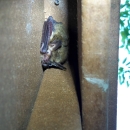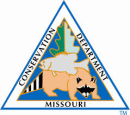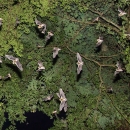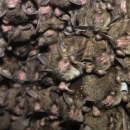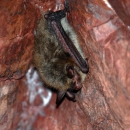Bats across North America are in decline, scientists across the globe strive to protect them. Our agency actively collaborates with federal, state and non-governmental partners to conserve and restore listed bat species. The full video series on bat conservation in Missouri can be accessed on YouTube.
Missouri's bats: flight to survival:
Bats are the only mammals capable of flight! Vona Kuczynska (USFWS) and Jordan Meyer (MDC) share what makes bats unique, their adaptations for flying and the conservation status of bats in Missouri. Click for audio described version.
Cave and countryside: bat habitats in Missouri
Not all bats hibernate or live in caves! Kris Budd (USFWS) describes what makes good bat habitat, where bats live and why we should let sleeping bats hang. Cave and countryside: bat habitats in Missouri: Audio described version.
White-nose syndrome: one of the biggest bat conservation challenges
White-nose syndrome is one of the biggest conservation threats to bats in North America. Gabriela Wolf-Gonzalez (USFWS) and Jordan Meyer (MDC) describe the impacts of this deadly fungal disease and the collaborative efforts to protect cave-dwelling bats by studying the disease, minimizing the spread of the pathogen and developing a cure. White-nose syndrome: one of the biggest bat conservation challenges: Audio described version.
Working together to protect Missouri's bats
To study a bat, you often have to catch one; to catch a bat, you must think like a bat! Vona Kuczynska (USFWS) explains the importance of studying bats and their habitats. She shows us how biologists “catch” bats and collect information about bat health during a summer mist-net survey. Working together to protect Missouri's bats: Audio described version.
Protecting Missouri’s bats
Many bat species have declined over the last few decades. Bats that were once common have now become incredibly rare. Eric Lemons (USACE) shares his experience of studying bats and how it’s changed over the years. He explains the importance of partnerships to study, preserve and restore habitats for bats and other native wildlife. Protecting Missouri’s bats: Audio described version.
Acknowledgements:
We express our gratitude to the private, state and federal partners who allowed us to film these incredible animals on their properties. We also thank the following biologists, researchers, volunteers and videographers.
U.S. Fish and Wildlife Service
- Gabriela Wolf-Gonzalez
- Vona Kuczynska
- Kris Budd
- Vana Christensen
- Andrew Dreas
- Chris Woodson
- Brett Billings
- Ryan Hagerty
- Melissa Clark
- Melissa Gonzalez
Missouri Department of Conservation
- Jordan Meyer
- Tayler MacDonald
U.S. Army Corps of Engineers
- Eric Limanen
- Eric Lemons
Accessibility
Section 508 of the Rehabilitation Act of 1973, as amended (29 U.S.C. 794d), and 375 DM 8 requires The U.S. Fish and Wildlife Service to ensure that any Information of Communication Technology it develops, procures, uses or maintains is accessible to both Federal employees and members of the public with disabilities. These videos are included in a general playlist which will include accessible videos with closed captions and audio descriptions.

